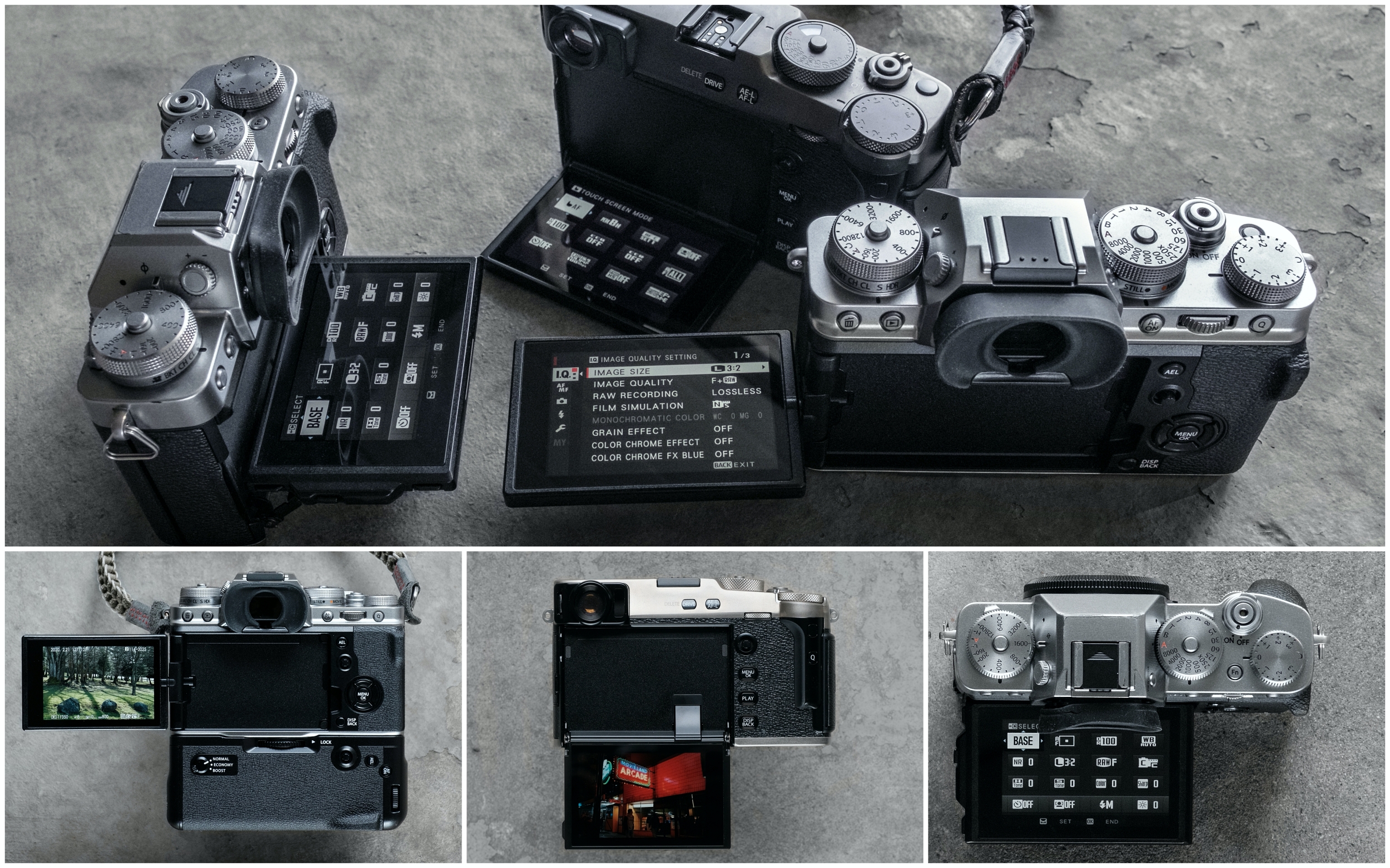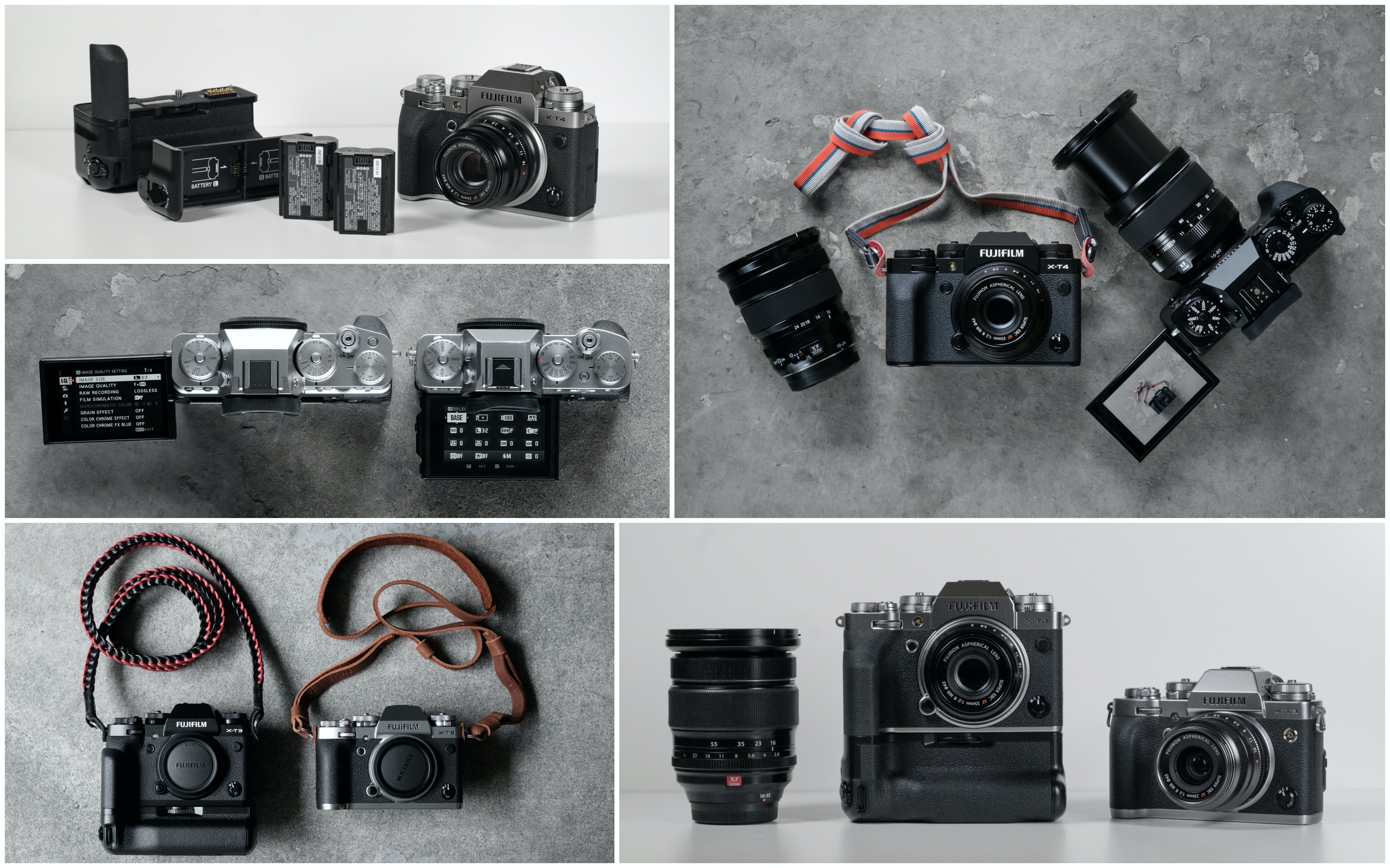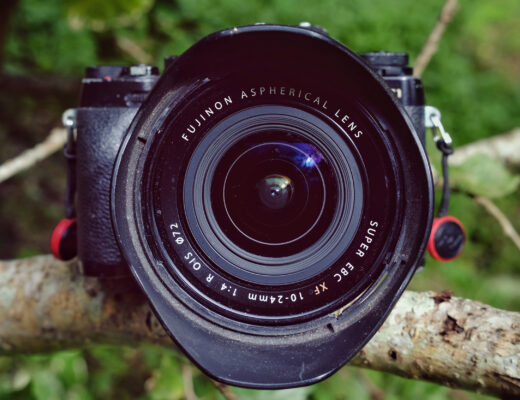Although it’s been quiet the past few months in Fujifilm-land when it comes to new cameras, it’s a good time to re-examine the the top-of-the-line X Series camera bodies. Three different bodies, three unique feature sets, all equipped with the same sensor and processor. If you are currently looking to upgrade, pick up a second body, or if you are new to the Fujifilm eco-system, this is a great time to be shopping around. One big reason is because the X-T3 recently had a $500 price drop. That’s a huge game changer in my books. I had the opportunity to help Fujifilm launch all three of these cameras, and shot extensively with all of them. I have a good idea of what the strengths and weaknesses are of each of camera. I currently own both the X-T4 and X-Pro3, but I am considering picking up the X-T3. Let’s take a look at these pro-level APS-C cameras and see which one is the best fit for you.
The quirkiest but also the most expensive of the three cameras is the X-Pro3 (currently $1799 in basic black). It’s the only one of the three that is still built in Japan, and uses titanium in its construction with 3 finish options, making it the premium option. I consider this the 2-seat convertible of the X-Series camera bodies. It’s not for everyone, but for those who can appreciate the design and function of this rangefinder-inspired camera, it’s perfect. After reviewing the Dura-Silver model for 2 months, including a quick trip to Toronto and Montreal, I knew I had to get one. Not only did I love the design and aesthetics (I ordered mine with the optional Dura-Black finish), I enjoyed using the unusual hidden flip-down LCD screen. For anyone who wants to criticize this design, just give it a try first and see what you think. For street photographers who are use to shooting with film rangefinders, you’ll be right at home with the X-Pro3. Having the ability to quickly hide the LCD, but just as easily flip it down and use it as a waist-level finder is efficient and practical. The X-Pro3 was also the first camera to get Classic Neg film simulation, which has now become my favourite film profile. Classic Neg is now available on the X-T4, X100V, and the GFX cameras, but not yet available on the X-T3.
The biggest weakness of the X-Pro3 is also it’s strength. The unique articulating screen is great for street photography, but horrible for video or for tripod work. The screen won’t flip down far enough when mounted to most tripods; and since there’s no HDMI output, you can’t mount an external monitor as a work around. Another issue is the fingerprint prone Duratect coating on the titanium top and bottom plate. It’s a $200 optional finish, and it’s suppose to offer extra scratch resistant properties. I come from the film world where everyone wants brassing and patina on their vintage rangefinders; so the fingerprints and smudge marks don’t bother me at all. However, you have been forewarned. To avoid this ‘problem’ you can opt for the regular black finish X-Pro3, which still uses titanium top and bottom plates, although it’s hidden underneath the very understated but somewhat plain black paint finish.

Fujifilm X-T4 + Sirui 50mm f/1.8 Anamorphic lens. 1/15th sec f/4 @ ISO 800 hand held. IBIS to the rescue, especially with third party lenses with no OIS
The camera that currently has the most hype is the most recently released X-T4. it’s basically 80% X-T3 with the addition of a fully articulating screen, IBIS (In-body Image Stabilization), and a new battery system. It’s also running a very similar firmware to the X100V and X-Pro3 with a few tweaks. On paper, the $1699 X-T4 is currently the best spec’d APS-C mirrorless body in the entire market. However, comparing it to the X-Pro3 would be a mistake. Going back to my car analogy, if the X-Pro3 is a 2-seat convertible, the X-T4 is an SUV. It can do anything and everything you throw at it. If you needed one body to do everything, you should get the X-T4. However, it doesn’t mean it’s the best body for every situation. For instance, on my day off I always grab my X-Pro3 due to it’s form factor, size and weight. For studio work, I prefer the X-H1 for it’s feather-touch shutter release as well as the larger grip. For tripod video work, I would choose the X-T3 because I prefer the I/O layout, including the in-body headphone and microphone inputs. However, as stated in my previous article ‘My Deserted Island Scenario’ I would 100% choose the X-T4 if push came to shove. Yes, I would choose an SUV over a convertible… if I was forced to choose only one.
I do however have a few small issues with the X-T4. Although I’m a YouTuber and do occasionally vlog, I don’t see much value in articulating the screen to selfie-mode. Most of the time when I use the LCD on a digital camera, it’s in waist-level mode, and the X-T4 is a pain as it has to swing out and then flipped around if the LCD screen is resting while facing out. If the screen is stored while facing in (my preferred position), you still have to flip it out sideways and then articulated to the right angle. It’s an extra step that slows me down for my street photography. This might seem like a minor point, but a swing out articulating screen also makes the camera wider, making it appear larger than it really is. Because of this, I typically keep the screen hidden and exclusively use the EVF or shoot blindly when using it for street work. I’m also not a fan of the new shutter button, which is similar to the X-Pro3’s. I much prefer the older shutter button design on the X-T3.
Other than these two issues, the rest is smooth sailing with the X-T4. The greatest benefits using the X-T4 over the other two cameras are having IBIS and a larger capacity battery. I use many lenses that don’t have OIS (Optical Image Stabilization), including third party lenses. Having IBIS allows me to hand hold down to 1/8th sec and still capture a sharp image without having to crank my ISO or use a tripod. In addition, the new NP-W235 battery has 75% more capacity than the older NP-W126 battery (2200 mAh vs 1260 mAh), and it’s very noticeable. On a big shooting day you only need 1 or 2 spare batteries versus carrying 4-6. If you’re a heavy video shooter or do a lot of low light hand held photography, the X-T4 makes a lot of sense.
The oldest of these three cameras is the mighty X-T3, released way back in September of 2018. This camera was the turning point for Fujifilm, convincing many Sony, Canon, Nikon and Panasonic photographers and videographers to make the switch. In fact, DPREVIEW reported the X-T3 was the ‘most-clicked-on’ camera in 2019 (even though the camera was over a year old) and rated it best camera for under $1500. These are some impressive accolades, but I am in full agreement. Even though it’s a 2 year old camera, remember that the foundation of the X-T4 and X-Pro3 is still based on the X-T3 platform, sharing the same 26.1 MP X-Trans CMOS 4 sensor and X-Processor 4 with the quad-core design. The only thing the X-T3 is missing is an upgraded firmware to fully take advantage of the X-Processor 4. Technically the X-T3 is bottle-necked by the older firmware, and I hope Fujifilm decides to give a full update soon to equal the features found on the X-Pro3 and X-T4. I really really want to see Classic Neg on the X-T3!
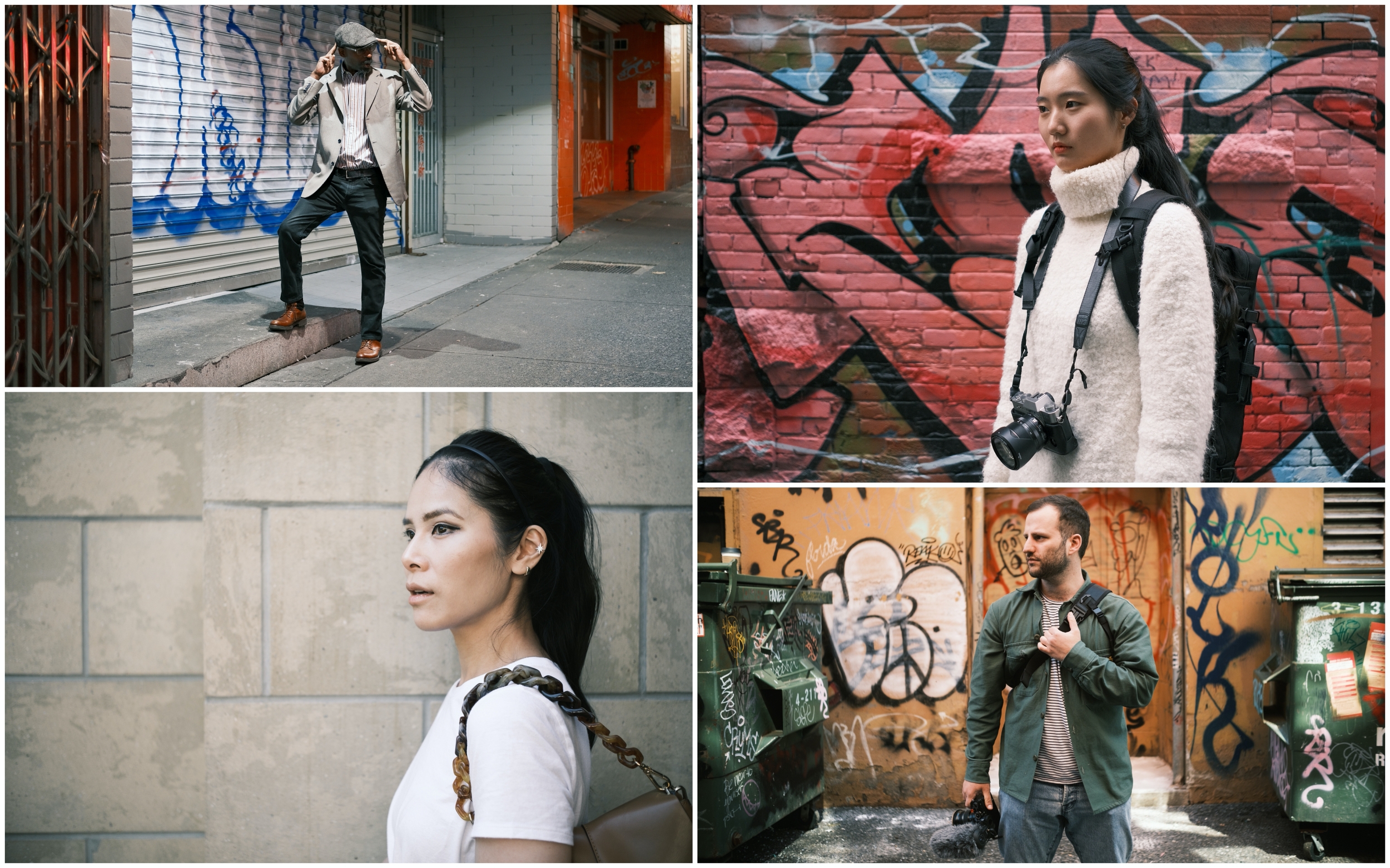
Classic Neg film profile used on both the X-Pro3 and X-T4. I hope the X-T3 gets this film simulation soon.
The only real negative I can find on the X-T3 is the battery life. If you’re shooting a lot of 4K video, I highly recommend at least 4 extra batteries. You’ll burn through them very quickly if you’re on location and without an outlet to recharge them. I would also recommend buying the battery grip that can double as your external charger. You can also use the battery grip with the included AC adapter, so you can plug it to a power source and have continuous power. In addition, you can use the in-body USB-C connector and connect an external battery pack to give you extra juice, so there are power options if you require long running times with the X-T3.
In conclusion, which top-of-the-line X Series camera would I suggest to people right now who are looking to buy a brand new body? Although I love the X-Pro3, I rarely recommend it to most photographers, and never to a videographer. It’s the most expensive of the three and has the least amount of features and functions. It’s a very pretty looking camera with exotic materials and a very quirky but functional LCD screen; but it’s for a very specific type of photographer. If you’re into premium products, or if you’re coming from Leica or a film rangefinder, the X-Pro3 might be the perfect fit for your personal style as well as your photographic shooting style.
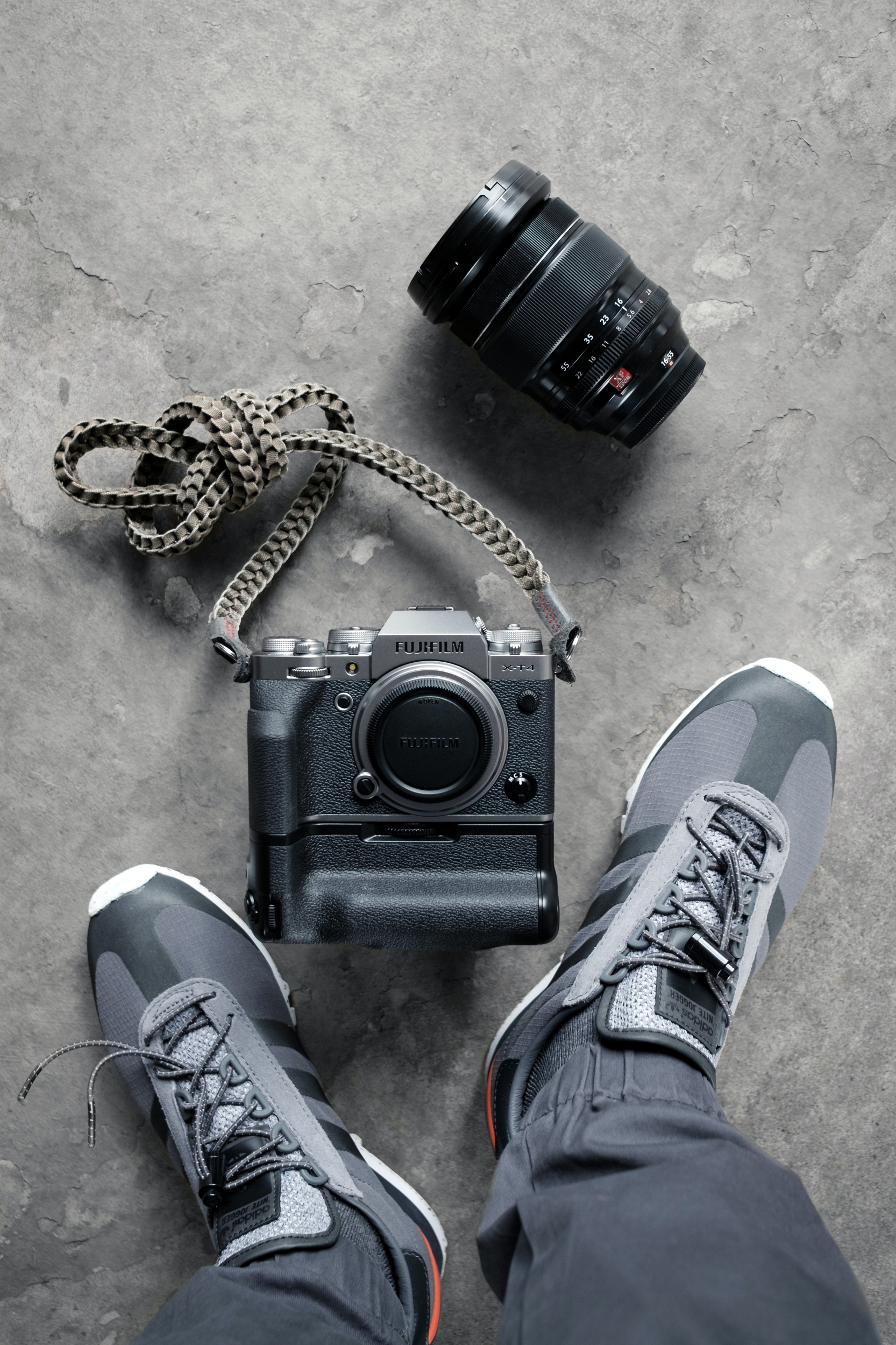 The X-T4 is a very easy recommendation. It’s the most feature rich of the three cameras, has the best battery performance, and has the latest and greatest firmware. If you can afford the $1699 price tag, the X-T4 is well worth it. How about the 2 year old X-T3? Would I recommend it? Previously it was just $200 cheaper than the X-T4 at $1499 versus $1699, so it was a hard sell. I usually recommended people to pick up the X-T3 second hand.
The X-T4 is a very easy recommendation. It’s the most feature rich of the three cameras, has the best battery performance, and has the latest and greatest firmware. If you can afford the $1699 price tag, the X-T4 is well worth it. How about the 2 year old X-T3? Would I recommend it? Previously it was just $200 cheaper than the X-T4 at $1499 versus $1699, so it was a hard sell. I usually recommended people to pick up the X-T3 second hand.
However Fujifilm just recently dropped the price of the X-T3 to $999. Now the difference is $700, enough to include a decent lens. For instance the X-T3 + XF 16-80mm f/4 R OIS WR kit is now $1499, which is still $200 cheaper than the X-T4 body alone. That’s enough to buy spare batteries and memory cards. If you’re already invested in the Fujifilm X Series with extra matching batteries, the new price for the X-T3 is very tempting. It’s a good second body or an upgrade to your older X-T2 or a big brother to your X-T30. If you’re new to Fujifilm and are looking for a pro body but on a tight budget, the X-T3 is the solid choice. You get all the professional features found on the X-T4 (weather-sealed body, dual card slot, high resolution EVF, customizable buttons, optional battery grip) but $700 cheaper. When Fujifilm decides to finally update the firmware on the X-T3 to match the X-T4 and X-Pro3 (I don’t see why they wouldn’t do so in the next couple of months), the X-T3 will easily be the best value pro mirrorless camera in the entire market, if it isn’t already. Thanks for reading and happy shooting!




